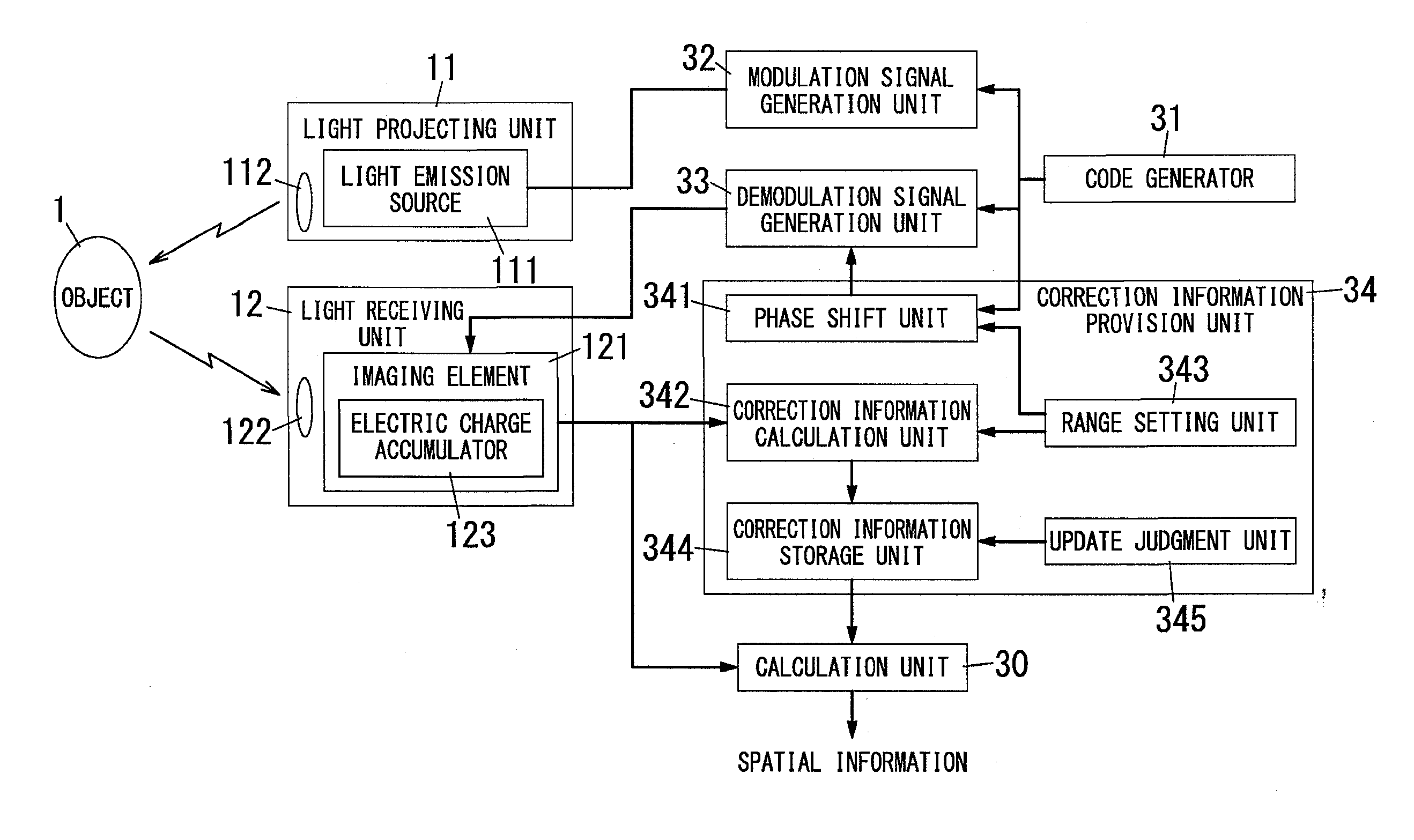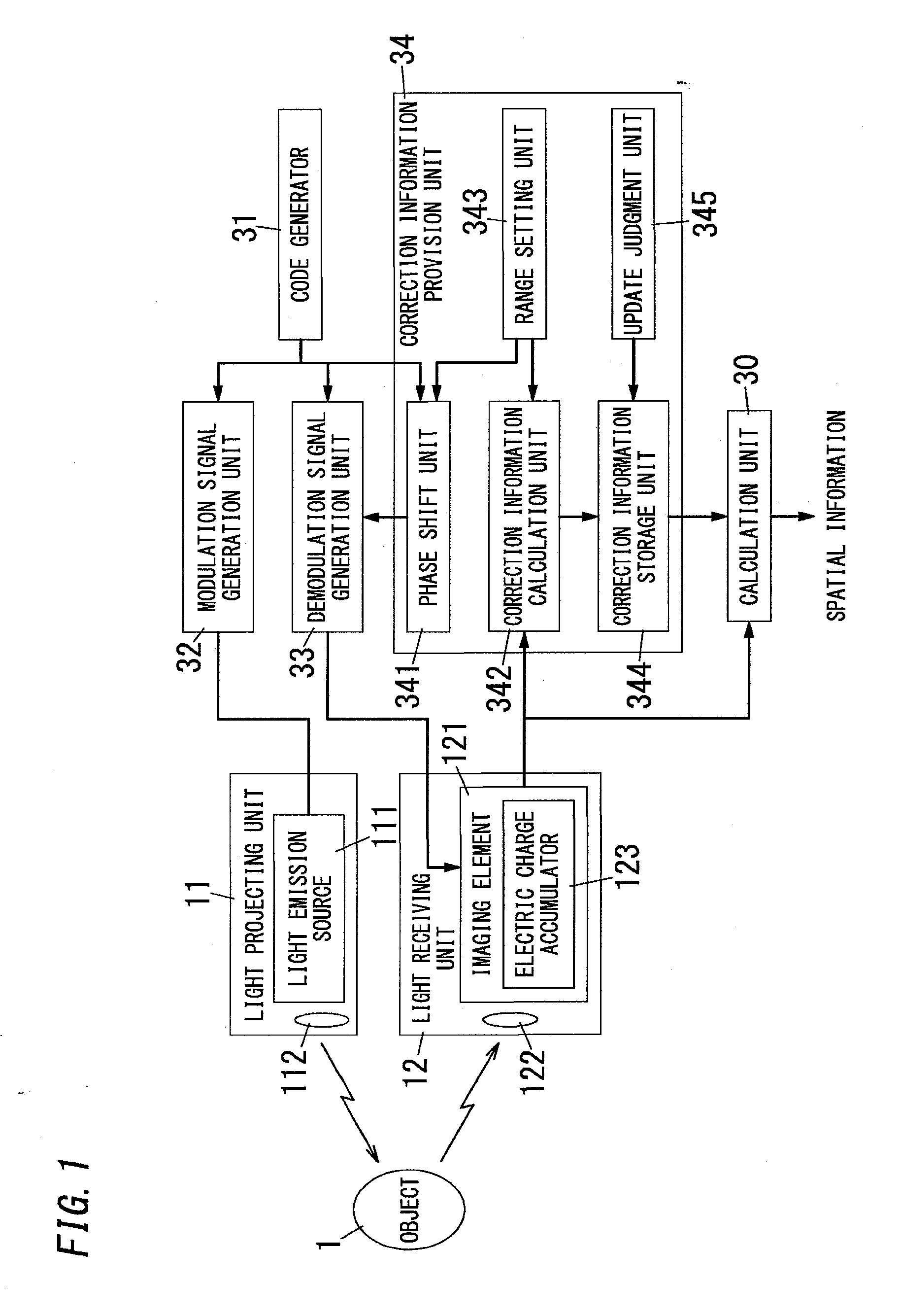Spatial information detection device
- Summary
- Abstract
- Description
- Claims
- Application Information
AI Technical Summary
Benefits of technology
Problems solved by technology
Method used
Image
Examples
first embodiment
[0105]As shown in FIG. 1, the spatial information detection device of the present embodiment includes the light projecting unit 11, the light receiving unit 12, the calculation unit 30, the code generator 31, the modulation signal generation unit 32, the demodulation signal generation unit 33 and a correction information provision unit 34. In brief, the present embodiment includes the correction information provision unit 34 in addition to the basic configuration for generating the distance image.
[0106]The correction information provision unit 34 provides, to the calculation unit 30, the correction information gA and gτ used in calculation of the distance value (spatial information). The correction information provision unit 34 has a function of calculating the correction information gA and gτ in addition to a function of providing the correction information gA and gτ to the calculation unit 30. In brief, the correction information provision unit 34 is configured to generate the cor...
second embodiment
[0163]In the first embodiment, the explanation is made to the technique of calculating the correction information gA and gτ with regard to the range in which only the transparent object 2 exists. In a process of calculating the correction information gA and gτ, it may be difficult to make a situation where only the transparent object 2 exists. The following explanation is made to a technique of acquiring the correction information gA and gτ relating to the transparent object 2 by use of the fact that the distance from the distance measurement device to the transparent object 2 is shorter than the distance from the distance measurement device to the space selected as the target for distance measurement.
[0164]When the transparent object 2 is closer than the object 1 is, the amount A0 of the electric charges related to the light reflected by the object 1 and the amount gA0 of the electric charges related to the light reflected by the transparent object 2 are varied with a change in the...
third embodiment
[0181]In the aforementioned embodiments, the operation of the distance measurement device under the existence of the transparent object 2 is described. However, also in the intensity measurement device, with using the correction information gA and gτ, it is possible to eliminate the electric charges caused by the existence of the transparent object 2 and calculate the spatial information. Hence, the spatial information detection device of the present embodiment serves as the intensity measurement device.
[0182]For example, when the transparent object 2 is absent, the following formula (28) is available in the light projection period to the object 1 which is present in the region determined by the range in which the time difference τ is equal to 0 or more and is equal to Tc or less. Note that, the suffix “L” is attached to denote the amount of the electric charges relates to the light projection period, and the suffix “D” is attached to denote the amount of the electric charges relate...
PUM
 Login to View More
Login to View More Abstract
Description
Claims
Application Information
 Login to View More
Login to View More - R&D
- Intellectual Property
- Life Sciences
- Materials
- Tech Scout
- Unparalleled Data Quality
- Higher Quality Content
- 60% Fewer Hallucinations
Browse by: Latest US Patents, China's latest patents, Technical Efficacy Thesaurus, Application Domain, Technology Topic, Popular Technical Reports.
© 2025 PatSnap. All rights reserved.Legal|Privacy policy|Modern Slavery Act Transparency Statement|Sitemap|About US| Contact US: help@patsnap.com



